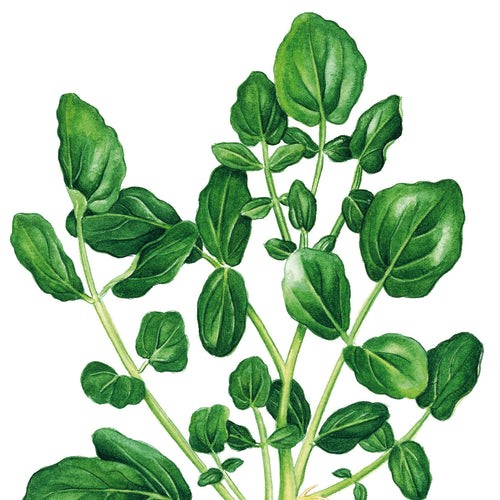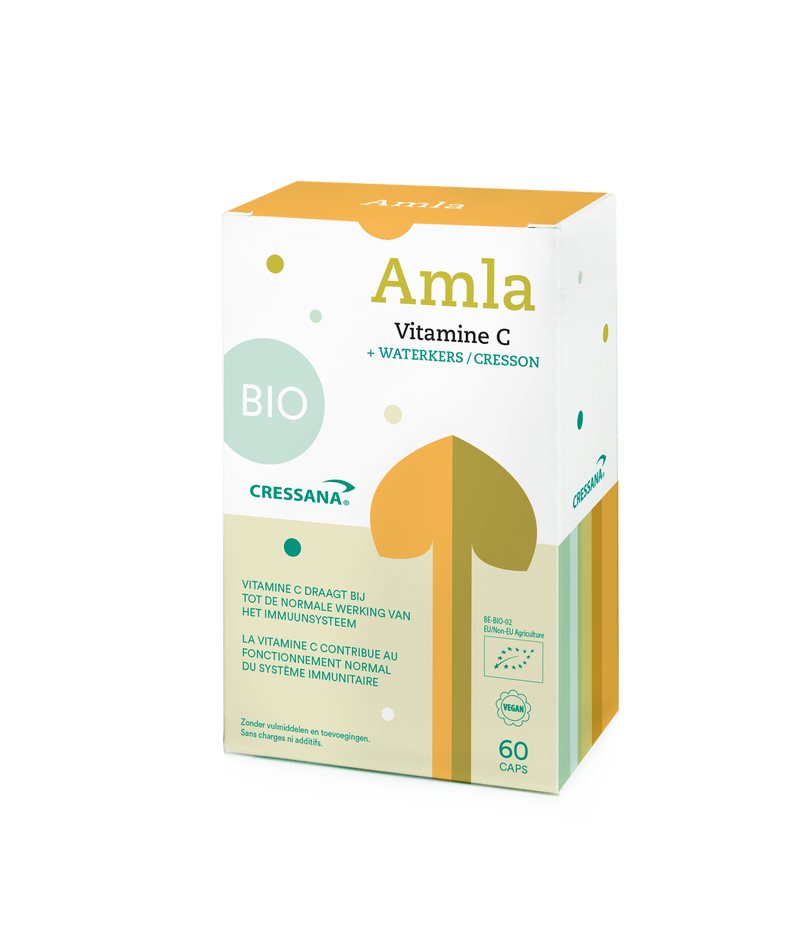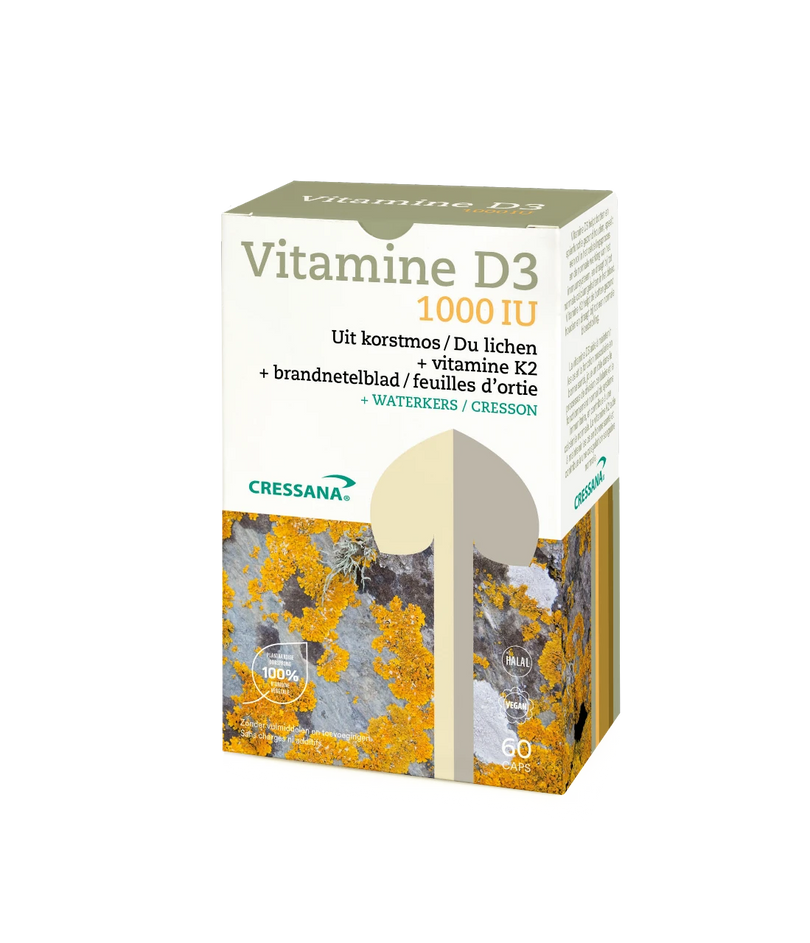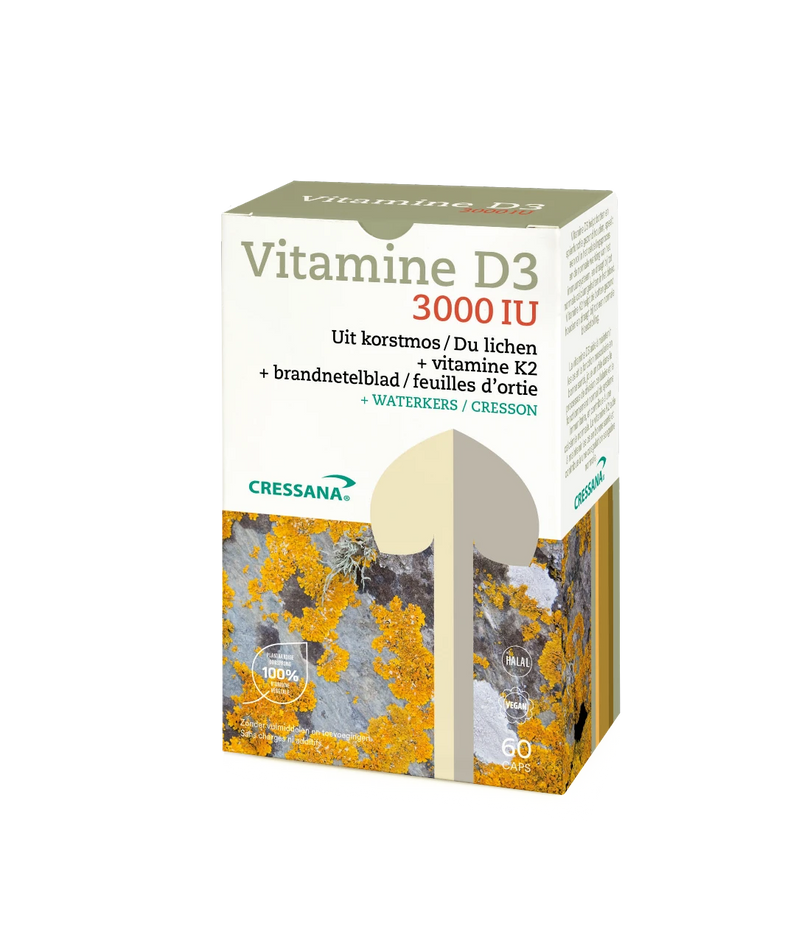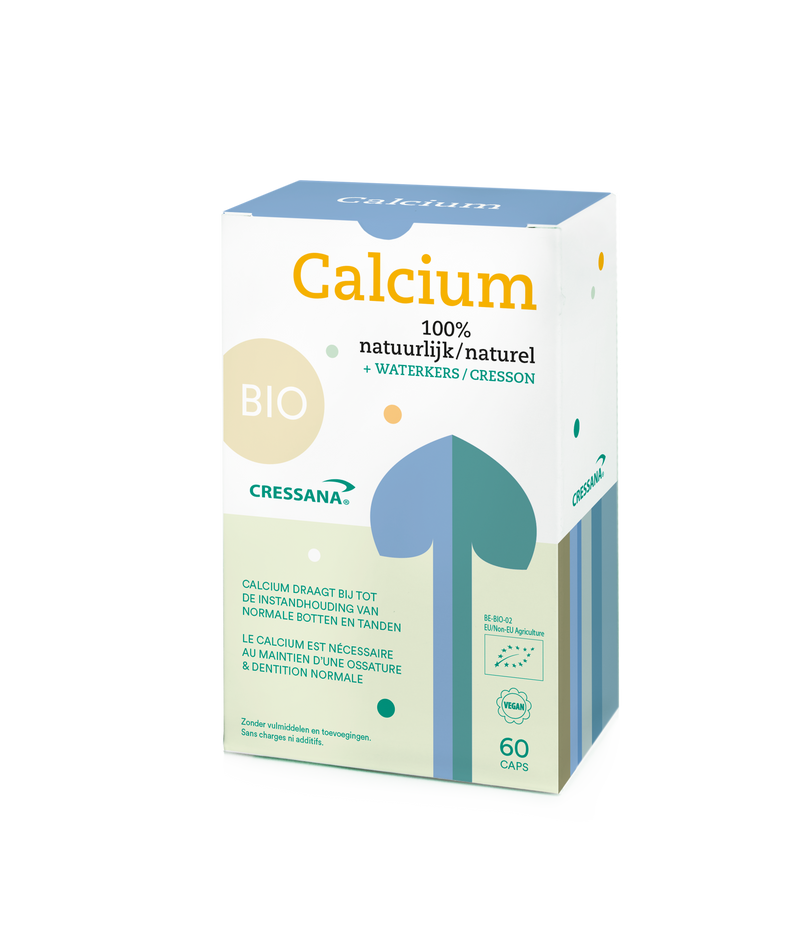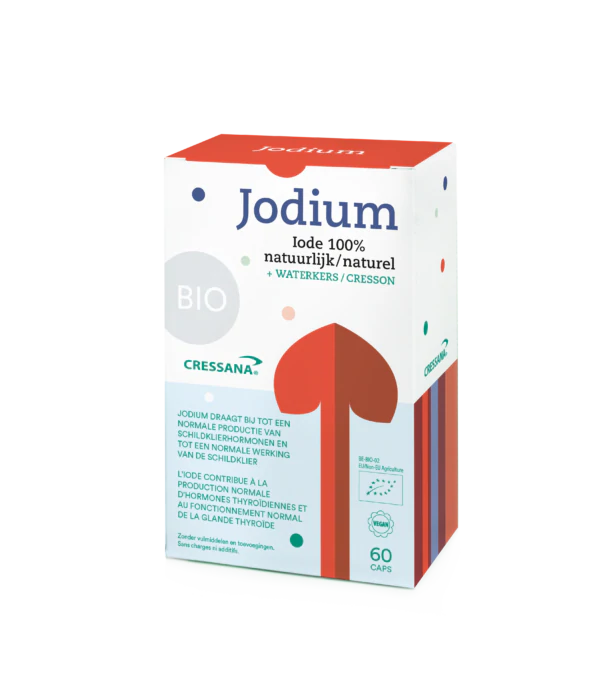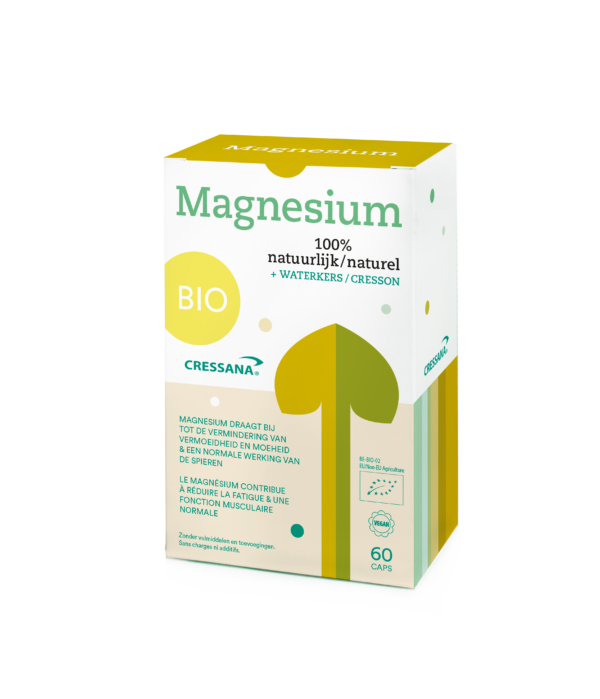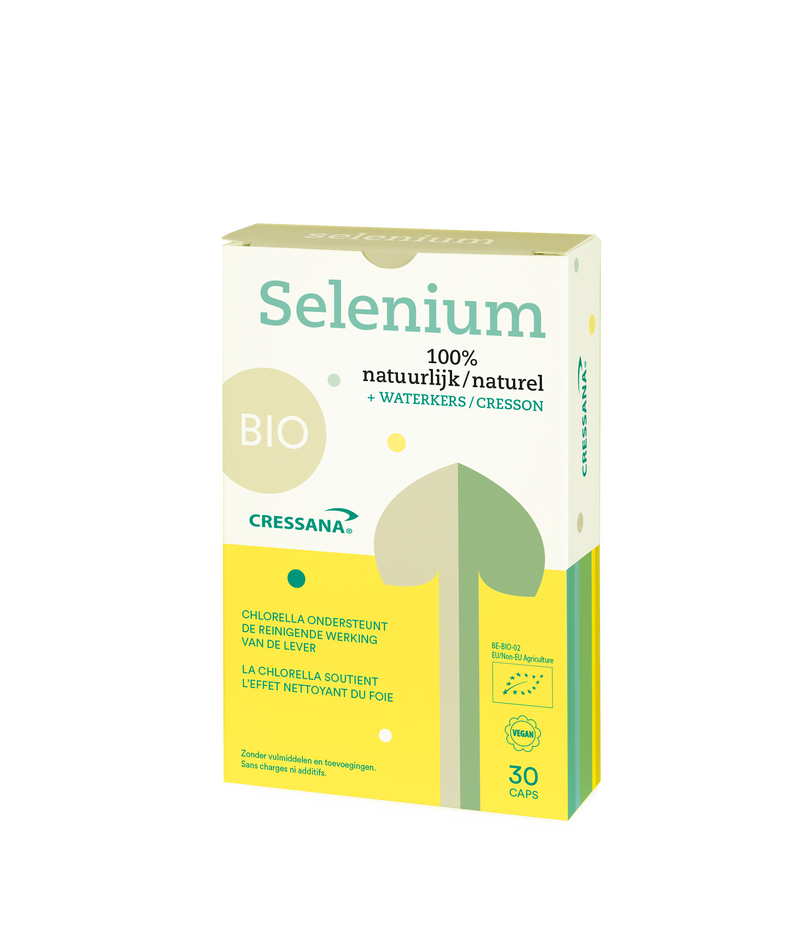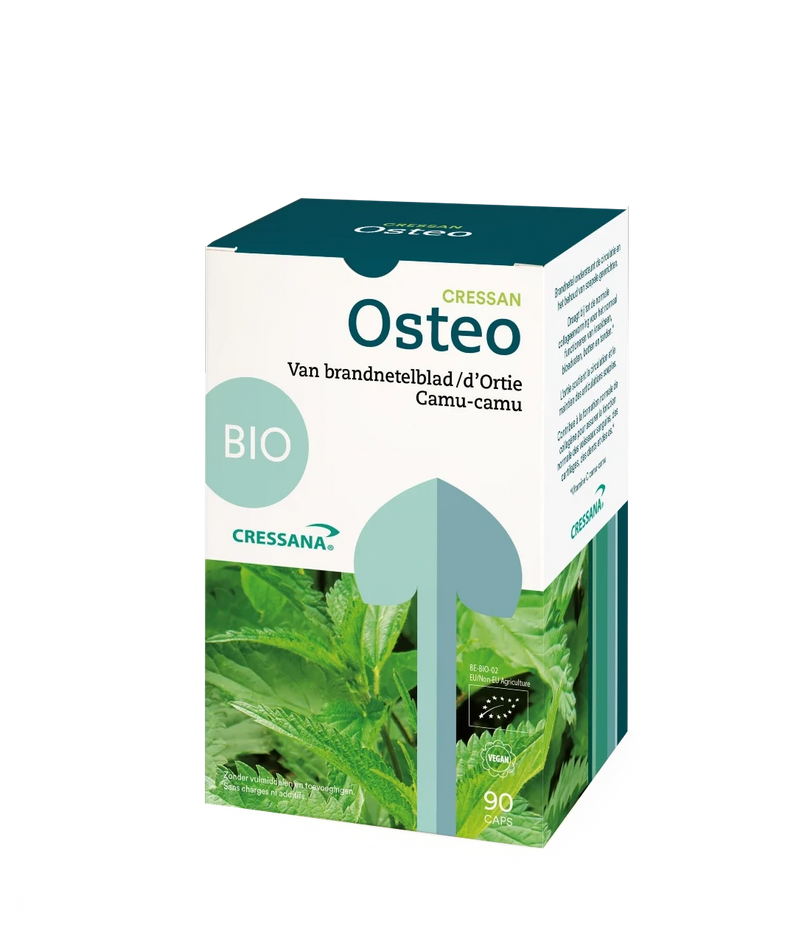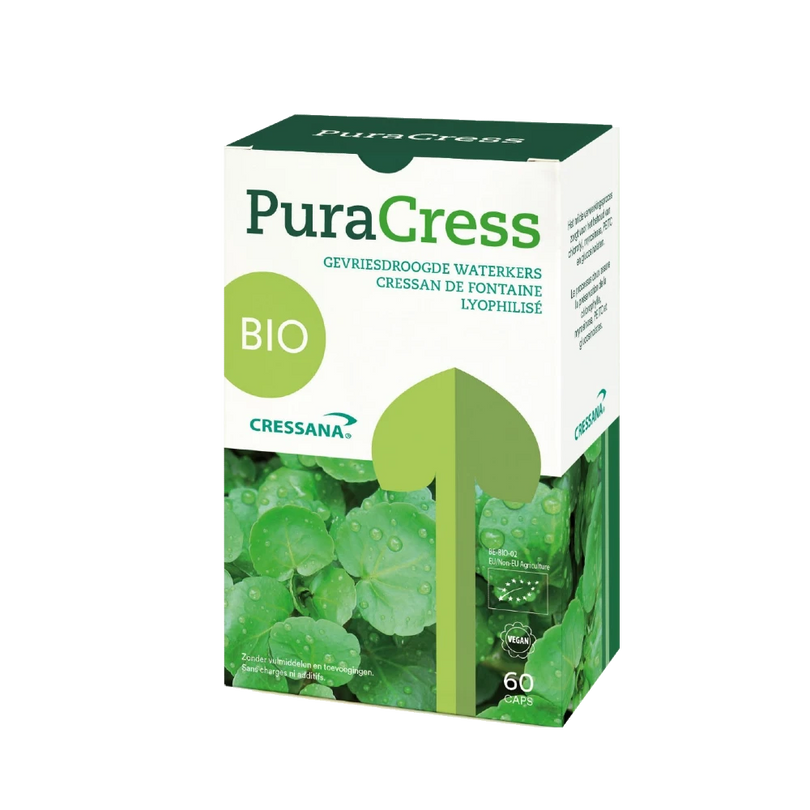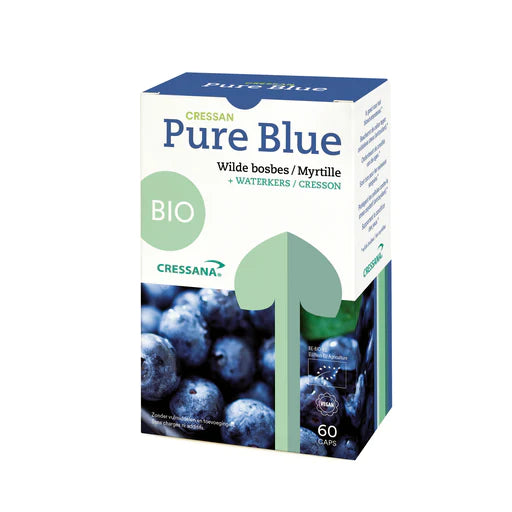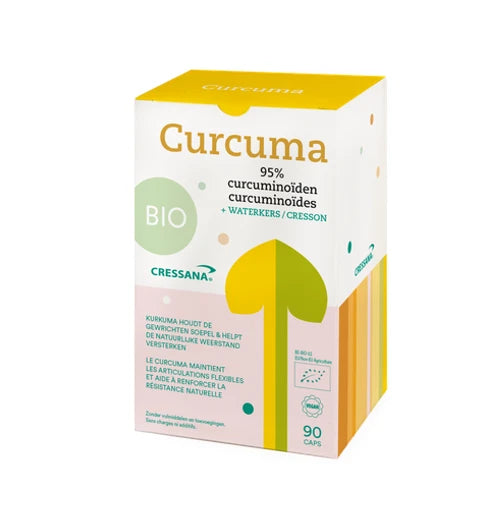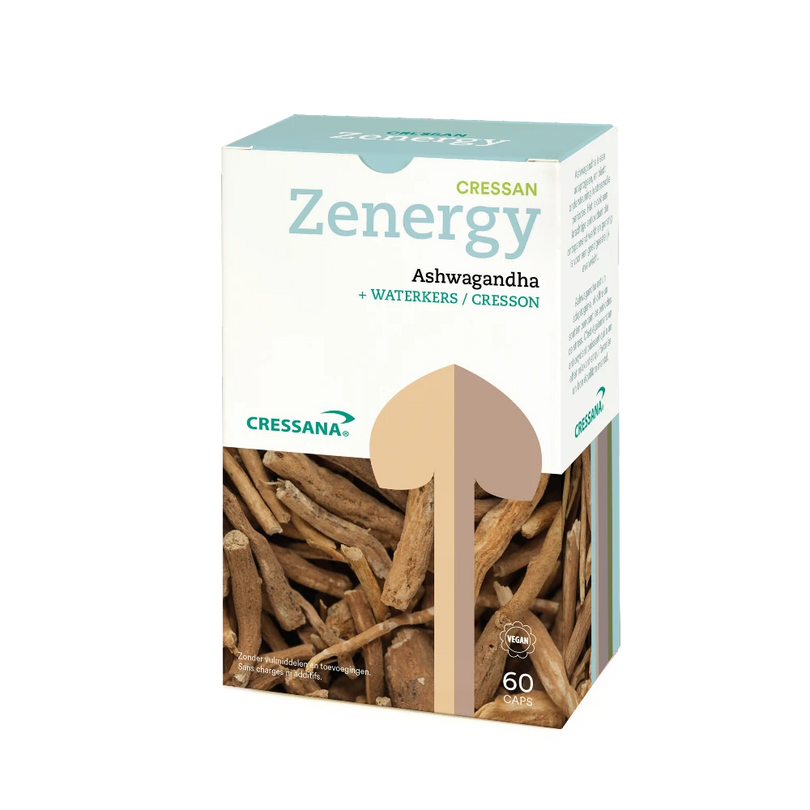To preserve the contents of watercress as best as possible, Cressana® developed a low-temperature freeze-drying technique. During this process, the cold chain that guarantees the freshness and shelf life of the watercress is never interrupted.
The contents of the capsules in all Cressana products are 100% pure without any addition of fillers, preservatives, anti-caking agents, colorants or other additives.
Watercress contains numerous temperature-sensitive components (including PEITC, myrosinase, chlorophyll) that are optimally preserved with Cressana® 's unique production method. PEITC and myrosinase in particular are extremely sensitive to degradation.
If watercress is treated carelessly, these active substances are destroyed. That is why drying techniques that involve warm air (air drying, tunnel drying, spray drying) are actually not suitable for such a health product.
Unique ingredients: glucosinolates and isothiocyanates
In addition to a high content of vitamins and minerals, watercress also contains important sulfur-containing compounds (glucosinolates). These ingredients are converted into a group of sharp-tasting substances (isothiocyanates) when chewing.
An explanation of these components
Watercress contains sulfur-rich substances called glucosinolates. They are precursors from which the isothiocyanates are produced. Isothiocyanates are the beneficial compounds that help keep our cells and tissues healthy. They are responsible for the sharp typical taste of watercress. One of the most important isothiocyanates supplied by watercress is PEITC.
The conversion of glucosinolates to the health-promoting PEITC occurs in two ways:
- During the most effective period myrosinase is active. This is an enzyme from the watercress leaves that comes into contact with the glucosinolates when chopping or chewing the raw vegetable and immediately carries out the conversion.
- In addition, our intestinal flora also converts a small portion of glucosinolates into PEITC.

In an analysis conducted at the University of Ghent*, of all watercress powders tested, Cressana® freeze-dried watercress concentrate was the only food supplement with a measurable content of PEITC and a relevant amount of myrosinase.
*Source: Heyerick A. Analysis of samples of watercress-containing nutritional supplements. March 31, 2011, C-EviDeNT - Ghent University

